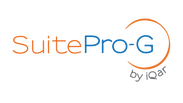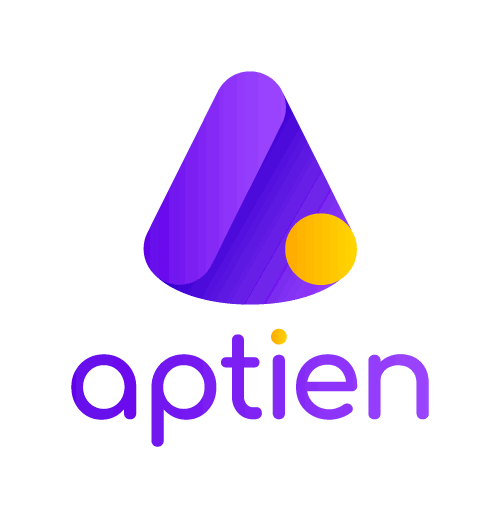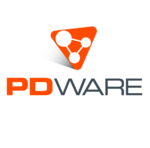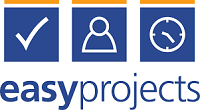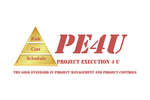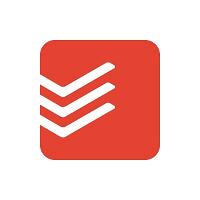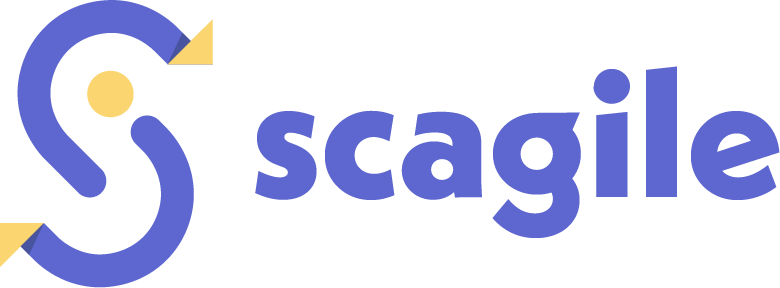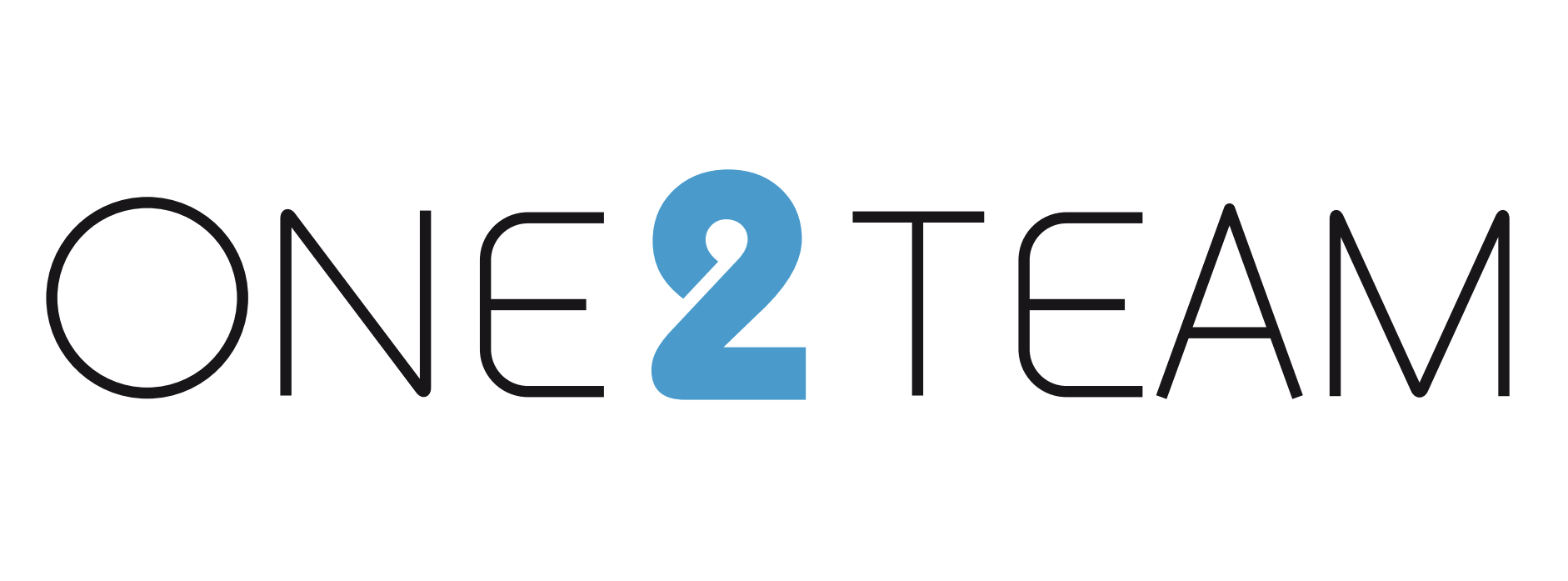What Is Project Portfolio Management Software?
Project Portfolio Management Software (PPM) is a complete application that helps firms properly manage their projects and portfolios. It offers a consolidated platform for businesses to strategically plan, prioritize, and execute projects by maximizing resources and aligning them with overall business goals.
At its foundation, PPM software provides a bird's-eye perspective of all current and prospective projects, allowing project managers to monitor progress and make educated decisions. It also facilitates cross-team cooperation by offering a single point of reference for all project-related data, documents, and communication. One of the primary benefits of PPM software is its ability to expedite project selection and portfolio optimization.
PPM software assists managers in selecting projects based on their potential value and risk using advanced data analysis and forecasting methodologies. It also delivers real-time insights into the health and performance of individual projects and the entire portfolio, allowing for swift course corrections when necessary. Furthermore, PPM software provides powerful budgeting and forecasting features, allowing firms to properly allocate resources and manage project expenses.
It also aids in the identification of potential bottlenecks and dependencies, resulting in shorter project schedules and faster delivery. Another important feature of PPM software is its reporting and analytics capabilities. PPM software enables firms to analyze project progress, detect patterns, and make data-driven choices by creating configurable reports and dashboards. This functionality also allows stakeholders to keep informed and work together successfully across departments and teams.
In a word, PPM software is an all-in-one solution for businesses who want to improve their project management processes and achieve better project results. PPM software assists organizations in driving efficiency, lowering costs, and successfully achieving business objectives by providing a comprehensive approach to project and portfolio management. So, if you want to streamline your project management process, investing in reputable PPM software can be a game changer for your firm.
What Are The Recent Trends In Project Portfolio Management Software?
Project Portfolio Management (PPM) software is a critical tool for modern enterprises to successfully manage and track projects, resources, and budgets. As demand for PPM software increases, so do market trends and developments.
Let's explore, we'll go over the latest trends in PPM software to help you make an informed decision when choosing the best solution for your firm.
1. Integration With Other Project Management Tools: One of the most important trends in PPM software is its integration with other project management tools including task management, communication platforms, and time tracking software. This facilitates the flow of data and improves team cooperation, resulting in better project management and delivery.
2. Cloud-Based Solutions: As remote work becomes more common and real-time data access is required, cloud-based PPM software has grown in popularity. It allows you to access project information from any device, anywhere, and at any time, making it ideal for teams working remotely or in many locations.
3. AI And Automation: These technologies are revolutionizing PPM software by optimizing operations, automating routine tasks, and giving data-driven insights. This allows project managers to make better decisions, maximize resources, and detect potential risks and hazards before they occur.
4. Emphasis On Visual Reporting: As project data volume and complexity increase, PPM software focuses on visual reporting capabilities to provide a clear and succinct snapshot of project performance. This helps stakeholders understand project progress and make data-driven decisions.
5. Agile Techniques: PPM software is also embracing Agile methodologies, which emphasize constant collaboration, adaptability, and flexibility. PPM systems that include Agile capabilities enable firms to effectively manage projects with changing requirements, frequent iteration, and speedy delivery.
Benefits Of Using Project Portfolio Management Software
When it comes to managing a complicated portfolio of projects, having the appropriate software can mean the difference between streamlining processes and driving success. This is where project portfolio management (PPM) software comes in. PPM software is a strong tool that helps organizations plan, prioritize, and execute projects more efficiently.
Let's explore, we'll look at the primary advantages of utilizing PPM software and how it can help your firm reach its objectives.
1. Streamlines Project Management Processes: PPM software allows firms to centralize all project-related data, including resource allocation, budget tracking, and status reports. This simplifies project management operations by removing the need to handle several spreadsheets, emails, and disparate applications. With everything in one location, project managers can simply monitor project status, identify potential hazards, and make timely decisions to keep projects on schedule.
2. Optimizes Resource Utilization: Organizations can face significant challenges with resource management, particularly when handling many projects at the same time. PPM software gives managers a complete picture of resource availability and workload, allowing them to assign resources to projects based on their skills and availability. This improves resource utilization and guarantees that the correct people work on the right tasks at the right time.
3. Enhances Collaboration And Communication: PPM software improves collaboration and communication among team members, stakeholders, and clients. With centralized project data and real-time updates, team members can readily access the information they need to execute their responsibilities effectively. PPM software also includes capabilities like shared calendars, document sharing, and project messaging, which allow teams to collaborate effortlessly and stay up to current on project updates.
4. Improves Project Visibility And Reporting: PPM software gives managers real-time visibility into project progress, allowing them to monitor project milestones, budgets, and risks. This enables them to discover problems early on and take corrective action to keep projects on schedule. PPM software also has customisable reporting options that let managers to create extensive reports on project performance, resource utilization, and budget, making it easier to keep stakeholders informed and make data-driven choices.
5. Enables Strategic Project Selection: One of the primary advantages of project portfolio management software is its ability to assist firms in selecting and prioritizing projects based on their strategic goals and objectives. Managers can use centralized project data to analyze project proposals and determine whether initiatives correspond with the organization's priorities and are most likely to succeed. This guarantees that resources are directed toward the proper projects, resulting in improved overall business outcomes.
Important Factors To Consider While Purchasing Project Portfolio Management Software?
When choosing project portfolio management software, there are several crucial variables to consider. These variables will help guarantee that the software meets your company's specific goals and expectations, resulting in effective implementation and uptake.
When assessing project portfolio management software solutions, consider the following critical factors:
1. Flexibility And Customization: Each organization has its own set of processes and requirements, therefore it's critical to select software that can be tailored to your individual requirements. Look for software that is highly customizable and can adapt to your organization's structure and processes.
2. Usability And User Experience: The successful adoption of project portfolio management software requires a user-friendly interface and straightforward navigation. Before making a purchase, get a demo or trial of the product to assess its usability and user experience. This will help you realize how easy it will be for your staff to use the software on a daily basis.
3. Integration And Compatibility: The project portfolio management software you choose must work seamlessly with your existing systems and tools. This will help to reduce data silos and ensure efficient data flow across departments and teams. Before making a purchase, ensure that it is compatible with your existing software and programs.
4. Reporting And Analytics: Reporting and analytics are essential components of project portfolio management software because they give useful information about project progress, resource allocation, and overall business performance. Look for software that allows you to customize reporting and analytics to measure KPIs and make data-driven decisions.
5. Scalability And Support: As your organization expands, your project portfolio management requirements may shift. It's critical to select software that is scalable and can adapt to your changing needs. Also, ensure that the program manufacturer provides enough support. Will they be available to help with any concerns or questions? Look for software that includes comprehensive support and training resources.
6. Pricing And ROI: Obviously, pricing is a significant consideration when selecting project portfolio management software. However, it is critical to look beyond the initial investment and analyze the software's long-term ROI. Will the software improve efficiency, lower expenses, and boost productivity? Before making any decisions, carefully consider the prospective return on investment.
By taking these crucial elements into account, you will be able to select the best project portfolio management software for your company's needs and assure its effective deployment. Remember to include key stakeholders and undertake extensive research before making an informed conclusion. Good luck in your search for the ideal project portfolio management software for your organization.
What Are The Key Features to Look For In Project Portfolio Management Software?
Project portfolio management software is an important tool for firms that want to manage and simplify their projects more efficiently. With project complexity on the rise, enterprises must invest in tools that may help them manage their project portfolios more effectively. However, with so many options on the market, selecting the best project portfolio management software can be intimidating.
To help you make an informed decision, below are the essential elements to consider while considering project portfolio management software.
1. Centralized Dashboard: A centralized dashboard is an essential component of project portfolio management software. It provides an overview of all of your projects, including their status, resources, and budget, at a glance. This functionality allows stakeholders to have real-time visibility and make informed decisions rapidly.
2. Teamwork Tools: In today's dynamic corporate climate, teamwork is critical to project success. Look for software that offers seamless communication and collaboration features to guarantee smooth coordination among team members, stakeholders, and vendors.
3. Numerous Project Management: Most firms run numerous projects at the same time, each with its own set of needs. The software you choose should be capable of managing many projects simultaneously, ensuring efficient resource allocation and excellent progress monitoring.
4. Resource Management: Effective resource management is one of the most important components in project success. The software should include tools for allocating resources, tracking their availability, and optimizing their utilization. This guarantees that resources are utilized optimally and projects are completed on time.
5. Time And Budget Tracking: One of the most important functions of project portfolio management software is the ability to monitor project schedules and budgets. It helps project managers to track progress against defined timelines and budgets, allowing them to take corrective action as needed.
6. Customizable Reporting: Reporting is vital for making decisions and tracking project progress. Look for software that allows you to create customized reports based on your individual requirements. This feature allows stakeholders to gain insight into project progress, resource allocation, and budget utilization.
7. Scalability: As your firm expands, so will your project portfolio. Choose software that can scale with your organization's changing needs and handle increasing project complexities without compromising performance.
8. Integration With Other Tools: Project portfolio management software should be compatible with other critical project management tools such as task management, communication, and finance software. This interface streamlines process and reduces human data entry, saving time and lowering the likelihood of errors.
Why Do Businesses Need Project Portfolio Management Software?
Project Portfolio Management (PPM) software is a critical tool for companies of all sizes and sectors. It is a centralized system that enables businesses to organize, track, and prioritize their projects, hence increasing overall efficiency and success rates. One of the key reasons why firms want PPM software is to boost productivity.
Businesses may streamline their project processes by managing many projects in one place, removing the need for manual tracking and changes. PPM software also helps teams keep organized, lowering the likelihood of missing deadlines or overlooking key work. Furthermore, PPM software offers firms a comprehensive picture of their project portfolio.
This implies that stakeholders can track the development and status of all initiatives, allowing for more informed decision-making and resource allocation. It also assists organizations in identifying potentially risky initiatives, allowing them to take proactive steps to avoid problems. Furthermore, PPM software allows firms to prioritize projects based on strategic goals.
Businesses that have a thorough perspective of all initiatives can identify which ones correspond with their goals and allocate their resources accordingly. This guarantees that time and money are invested in projects that will add the most value to the firm. Another important feature of PPM software is its capacity to promote communication and collaboration among team members.
Teams can collaborate more efficiently and effectively by using a single platform for project updates, documents, and conversations. This also lowers the possibility of miscommunication and contradicting information. Furthermore, PPM software helps businesses manage project budgets and resources. By measuring spending and resource allocation, firms can discover possible financial or resource constraints and take corrective action.
This guarantees that projects stay within budget and finish on time. In today's fast-paced corporate environment, a thorough and effective project management system is critical to success. PPM software offers businesses with the tools they need to efficiently manage their projects and achieve their strategic objectives. As a result, investing in PPM software is a sound investment for any company trying to improve its project portfolio.
How Much Time Is Required To Implement Project Portfolio Management Software?
The time required to adopt project portfolio management software varies according to numerous factors, including the organization's size, the complexity of existing procedures, and the level of customization necessary. On average, it can take between 3-6 months to completely integrate the program and reap its benefits. However, this schedule is subject to significant variation based on the organization's and team members' preparation.
The implementation process normally consists of several parts, including data migration, training, and system configuration. It also requires the support and collaboration of important stakeholders within the organization. It is critical to have a project team dedicated to overseeing the implementation process and ensuring that everyone is on board. Before deploying project portfolio management software, an in-depth examination of the organization's present processes is required.
This will aid in detecting any potential blockages or issues that may develop during the implementation process. It will also enable a more accurate assessment of the time and resources required. To guarantee a successful implementation, a comprehensive plan is required that describes the timetable, milestones, and responsibilities of all parties involved. Communication and communication between the software vendor and the organization's team members are also critical to a successful and timely implementation.
What Is The Level Of Customization Available In Project Portfolio Management Software?
When it comes to project portfolio management software, personalization is an important factor to consider. The level of customisation provided can have a significant impact on the effectiveness and efficiency of your portfolio management process. But what exactly does customization entail in this context? Essentially, customization in project portfolio management software means the ability to modify the software to your organization's specific needs and operations.
This includes not only visual customisation, like branding and style, but also the option to change features and functionality to meet your exact needs. The level of flexibility possible in project portfolio management software varies significantly between suppliers. Some may just provide minimal customization choices, but others may provide a considerable degree of freedom and control.
One key factor to consider is the flexibility to design custom fields and data structures. This enables you to record and track information relevant to your organization's projects and portfolios. It also allows you to arrange and categorize data in a way that is practical for your business. Also, search for software that allows you to personalize workflows and processes.
This allows you to create automated workflows, notifications, and approvals depending on your own business rules and requirements. This can save time and minimize human error in the portfolio management process. Another factor to consider is the capacity to interact with other systems and solutions that your company may be employing.
Custom connections can significantly improve the functionality of your project portfolio management software and reduce operations even further. Finally, the level of customisation should be consistent with your organization's current and future requirements. As your company develops and evolves, your portfolio management software should be able to adapt and handle the changes.
Which Industries Can Benefit The Most From Project Portfolio Management Software?
Project Portfolio Management Software (PPM software) is a powerful solution that allows enterprises to manage and prioritize their projects, resources, and portfolios in a single location. Its benefits are apparent, and it has grown in favor across a variety of businesses. However, not all industries have the same level of requirement or impact on PPM software.
Let's explore, we will explain which industries can most benefit from PPM software and how it can help them achieve their goals.
1. Information Technology (IT) Industry: The IT industry is at the forefront of technology and is continually growing, thus project management is vital to its success. PPM software gives IT teams full project insight, allowing them to spot possible blockages, manage resources efficiently, and complete projects on time. PPM software also assists IT firms in defining and monitoring project budgets, tracking project progress, and prioritizing activities, assuring successful project execution.
2. Construction Industry: In the construction sector, successful project delivery is critical for staying on budget and achieving tight deadline. PPM software simplifies project planning, tracks project costs, and manages project schedules and milestones. Construction organizations can use PPM software to improve resource allocation, manage project risks, and engage with team members in real time. PPM software also offers accurate forecasting and budget management, assuring cost-effectiveness and profitability.
3. Healthcare Industry: The healthcare business is being pushed by increased demand for patient care and a focus on quality improvement. PPM software enables healthcare firms to prioritize and manage patient-care projects, meet regulatory requirements, and improve overall operational efficiency. It enables healthcare facilities to track project performance, facilitate communication, and manage resources while providing high-quality patient care.
4. Marketing And Advertising Industry: In the fast-paced and competitive marketing and advertising industry, effective project management is critical to success. PPM software enables marketing teams to manage various campaigns, monitor project progress, and engage with clients. It speeds up project approvals, prioritizes activities, and ensures on-time project delivery. Marketing and advertising organizations can use PPM software to manage complex campaigns more efficiently, stay on budget, and produce high-quality outcomes.
5. Manufacturing Industry: The manufacturing business must balance numerous projects while managing resources and achieving deadlines. PPM software assists manufacturing companies in optimizing project scheduling, managing project dependencies, and allocating resources efficiently. It also delivers real-time project status data, enabling manufacturers to make data-driven decisions that assure project completion on schedule and increase overall operational efficiency.
Conclusion
Finally, adopting the correct project portfolio management software can significantly improve your organization's efficiency, productivity, and overall success. Before selecting a decision, you should properly examine your requirements and consider essential elements like as pricing, integrations, usability, and security. We hope this buyer's guide has offered useful information and helped you narrow down your selections to discover the best fit for your company.
Remember to take advantage of free trials and demos to have a better understanding of the product before making a purchase. Investing in dependable project portfolio management software allows you to optimize your project management process and easily reach your business objectives. We wish you all the best with your software decision process!


